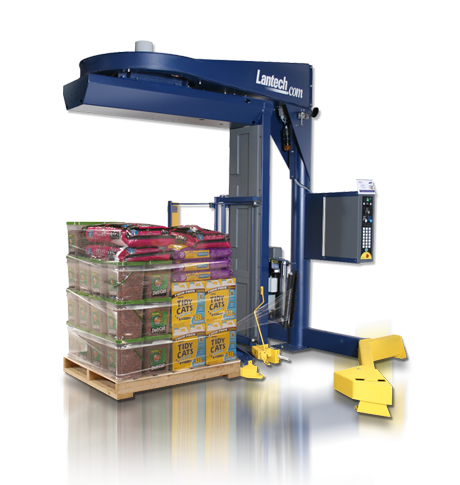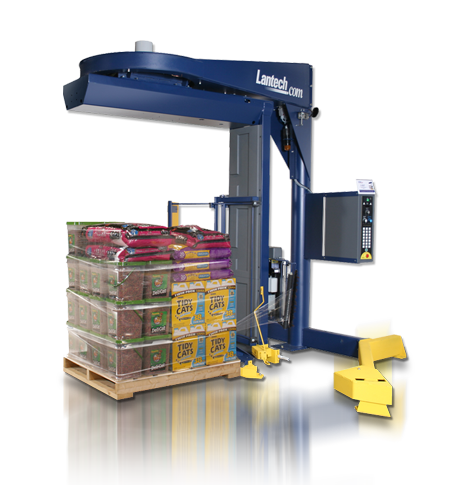Here at Lantech we have a broad stretch wrapper product line and decades of experience, so we believe there are very few limits to what a stretch wrapper can do. Our philosophy is if we can get it to the wrap zone then we can wrap it. That being said there are times where special considerations do apply.
 1. The most significant potential issue with stretch wrapping occurs when the process might contribute to a safety situation. The prime example is trying to stretch wrap hazardous materials like explosives. Stretch wrapping explosives and other hazardous materials can be very tricky because in some cases static discharge is generated by the film unwinding, which is a significant issue around many explosives and other hazardous materials.
1. The most significant potential issue with stretch wrapping occurs when the process might contribute to a safety situation. The prime example is trying to stretch wrap hazardous materials like explosives. Stretch wrapping explosives and other hazardous materials can be very tricky because in some cases static discharge is generated by the film unwinding, which is a significant issue around many explosives and other hazardous materials.
2. Automatic stretch wrappers wrapping heavy loads may require some adjustments to material handling equipment, specifically conveyors. Standard conveyors can handle weight up to 4,000 pounds. Heavy duty conveyors can handle loads up to 6,000 pounds. For even heavier loads, drag chain conveyors should be used. For semi automatic machines, loads heavier than 4,000 pounds need special consideration and loads heavier than 6,000 pounds should be wrapped on overhead stretch wrappers so the floor bears the weight of the load.
3. Odd sized and shaped objects, like automotive exhaust tubes for example, often require a different type of wrapping system or accommodations with the packaging design and material. A vertical wrapper that goes over the top and underneath the load may be more appropriate for things like pipes and tubes.
4. Liquids have another dynamic at play from most solid pallet loads. Harmonic motion occurs when liquids move in their containers which can affect stability of the entire pallet load. Simply put, as the pallet load is acted upon by the force of the truck’s motion the liquid then moves and acts on the walls of the container. The container then acts on and exerts force to the restraining stretch film. Liquids often require more containment force on the pallet load to handle the harmonic motion that occurs when a truck stops, starts, or turns.
5. High humidity or tropical environments play havoc with corrugated. After 30 days in a humid condition box walls tend to weaken significantly and may lose up to 30-40% of their strength which could lead to a collapsed pallet load. If the corrugated gives out then the stretch wrap has nothing to support and leads to a pile of boxes, contents, and wrap that is not secure.
At the end of the day, stretch wrapping fundamentals still apply. Make sure your that your loads have enough containment force and, if possible, are bonded properly to the pallet with no long or dragging film tails.
You may be interested in these related posts:
- Are Your Loads Stretch Wrapped Effectively?
- Fight Repetitive Strain Injuries with a Stretch Wrapper
- Combat Low Productivity Growth with Stretch Wrapper Automation
This post was published on January 19, 2017 and updated on April 13, 2017.
January 19, 2017

